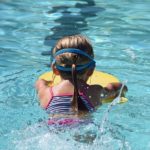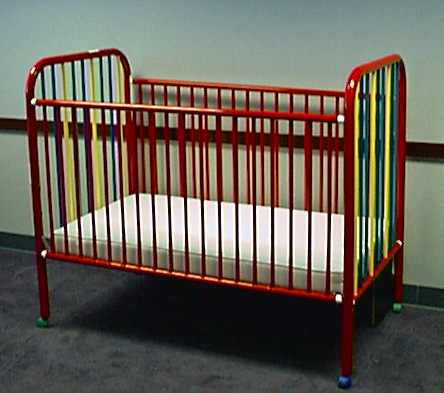 The hottest days of summer have arrived, and that means it’s time to cool off in the water. Whether you’re at the lake, a water park, or just your backyard pool, safety must come first, especially for young children. Some products designed for the pool and water can enhance your experience and keep you safe, but others can increase the risk of accidents. Follow these safety tips to protect children.
The hottest days of summer have arrived, and that means it’s time to cool off in the water. Whether you’re at the lake, a water park, or just your backyard pool, safety must come first, especially for young children. Some products designed for the pool and water can enhance your experience and keep you safe, but others can increase the risk of accidents. Follow these safety tips to protect children.
- Make sure your backyard pool is secure. In addition to using pool and spa covers, gov advocates for a fence at least 4-feet high around all sides of the pool. The fence should not be climbable, and the pool should only be accessible through a self-latching gate. Alarms add another line of defense: gate alarms will sound when someone opens the gate to access the pool, and pool alarms will sound when someone enters or falls into the water. In securing your pool, it’s also important to make sure you don’t have any recalled products. Just last February, S.R. Smith recalled their helix pool slides due to fall hazard. The sides of the slide are too low, and children can fall off before they reach the water. This can result in serious injury, especially if they fall onto concrete. Click here to learn more about having your slide repaired by S.R. Smith.
- Be cautious of pool drains. Pool and spa drains operate with so much force that even a strong adult is unlikely to be able to free a child who was caught by jewelry, hair, or limbs. In 2002, Virginia Graeme Baker became one of several children who drowned after becoming trapped under water by a pool drain. Five years later, the Virginia Graeme Baker Pool and Spa Safety Act was passed requiring anti-entrapment drain covers in public pools and spas. Homeowners with pools and/or spas should also install anti-entrapment drain covers. Caregivers should check pool drains to be sure they’re not loose or broken, and children should be taught to stay away from drains and filters.
- Check pool toys for recalls, rips, or sharp edges. Inflatable pool toys should not be used as life vests or safety devices, so it’s always important to keep young children at arm’s length. Inner tubes, rafts, and habitat pool floats are at risk for flipping over or deflating, posting a risk for drowning. Habitat floats, which contain walls and roofs, and uniquely dangerous because children can be trapped inside, and adult monitors may not see them due to blind spots.
For more resources on water and pool safety, check out the CPSC’s Pool Safely campaign. Their site includes resources for parents and caregivers, as well as educational tools for children. Take the Pool Safely pledge to show your commitment to water safety and share these resources with others.
For up-to-date information on product recalls, sign up for our email alerts or follow us on Facebook and Twitter.


